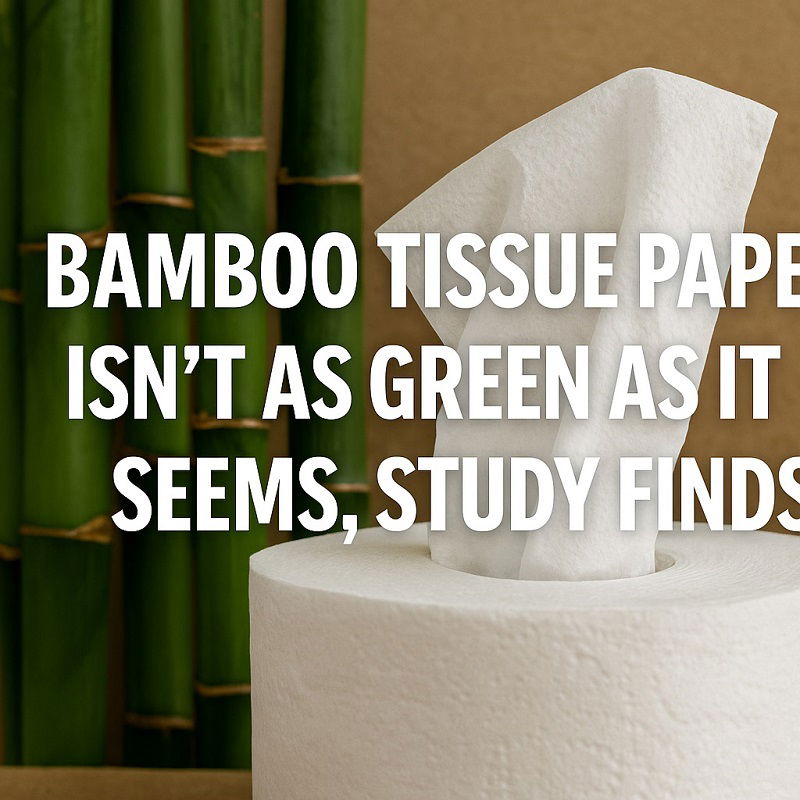Bamboo tissue paper has become a popular choice for eco-conscious shoppers, often marketed as a sustainable and “tree-free” alternative to regular paper. However, new research from North Carolina State University (NC State) suggests that bamboo tissue might not be as environmentally friendly as people think—and in some cases, it could actually have a larger carbon footprint than conventional tissue made in North America.
The study, published in *Cleaner Environmental Systems*, compared the climate impacts of bamboo tissue paper made in China with wood-based tissue produced in the United States and Canada. Researchers examined the entire life cycle of both products—from the sourcing of raw materials to the manufacturing process—and found that the key factor affecting emissions wasn’t the material itself, but the energy used to power production.
“As far as emissions go, the technology used to create hygiene tissue paper is far more important than the type of fiber it’s made from,” said Naycari Forfora, the study’s lead author and a Ph.D. candidate at NC State’s College of Natural Resources. “Because China’s power grid relies heavily on coal, the emissions from making bamboo tissue are much higher than those from tissue made in North America, where cleaner energy sources are used.”
While bamboo itself is often praised for being fast-growing and renewable, the study found that these advantages don’t necessarily translate into lower carbon emissions when production depends on fossil fuels. Bamboo tissue produced in China was responsible for about 2,400 kilograms of carbon dioxide equivalent (CO₂e) per ton of paper, compared with 1,824 kg CO₂e per ton for wood-based tissue made in the U.S.
The researchers also discovered that Chinese bamboo tissue performed worse in several other environmental categories, including smog formation, air quality impacts, and ecological toxicity.
In short, while bamboo is a sustainable crop, the way it’s processed and powered matters far more for the planet’s health.
Ronalds Gonzalez, co-author of the paper and an associate professor at NC State, explained that the perception of bamboo as a green alternative is partly a misunderstanding. “Bamboo is a crop like any other,” he said. “It’s planted, harvested, and processed much the same way as wood. The difference lies in the production system—and in China, those systems are still largely coal-based.”
However, the study also offered a hopeful takeaway. When bamboo tissue was modeled in regions with cleaner electricity grids, such as those powered by renewables, the environmental differences between bamboo and wood-based tissue nearly disappeared. This finding highlights that technological improvements and clean energy adoption are far more effective for reducing emissions than simply switching fiber types.
The authors are part of NC State’s Sustainable & Alternative Fibers Initiative (SAFI), a global network of more than 30 partners from academia, industry, and government. SAFI’s mission is to promote responsible fiber development and provide scientific insight into the true sustainability of both traditional and alternative materials.
Their message is clear: before choosing a product for its green label, it’s worth asking how and where it was made.
https://knowridge.com/2025/11/bamboo-tissue-paper-isnt-as-green-as-it-seems-study-finds/
